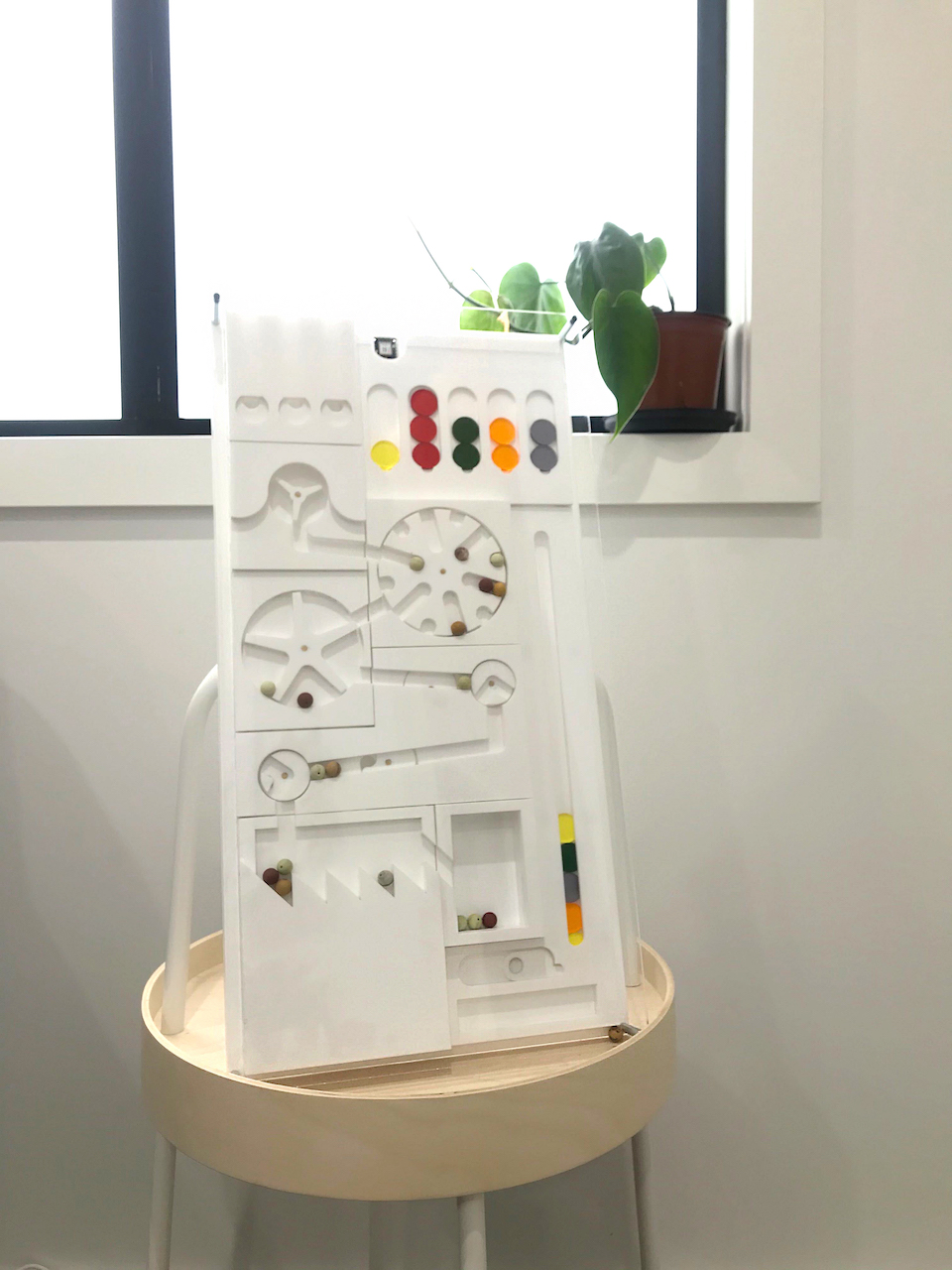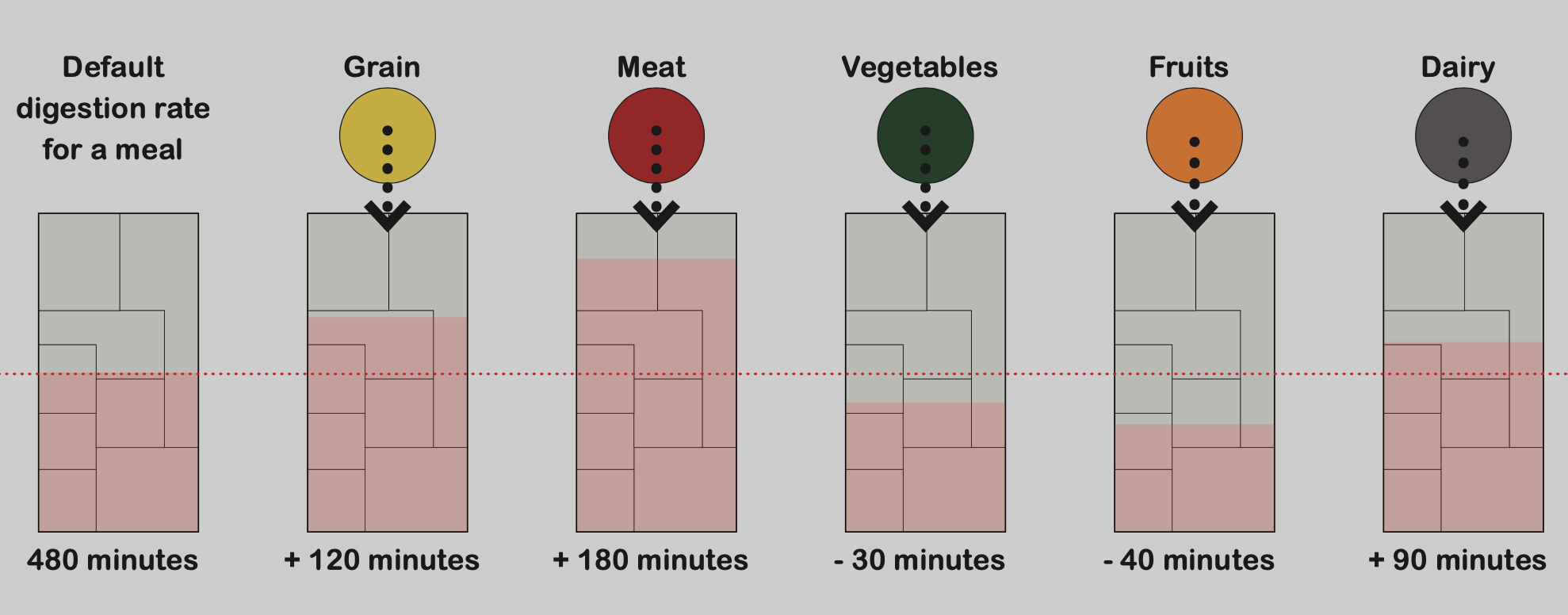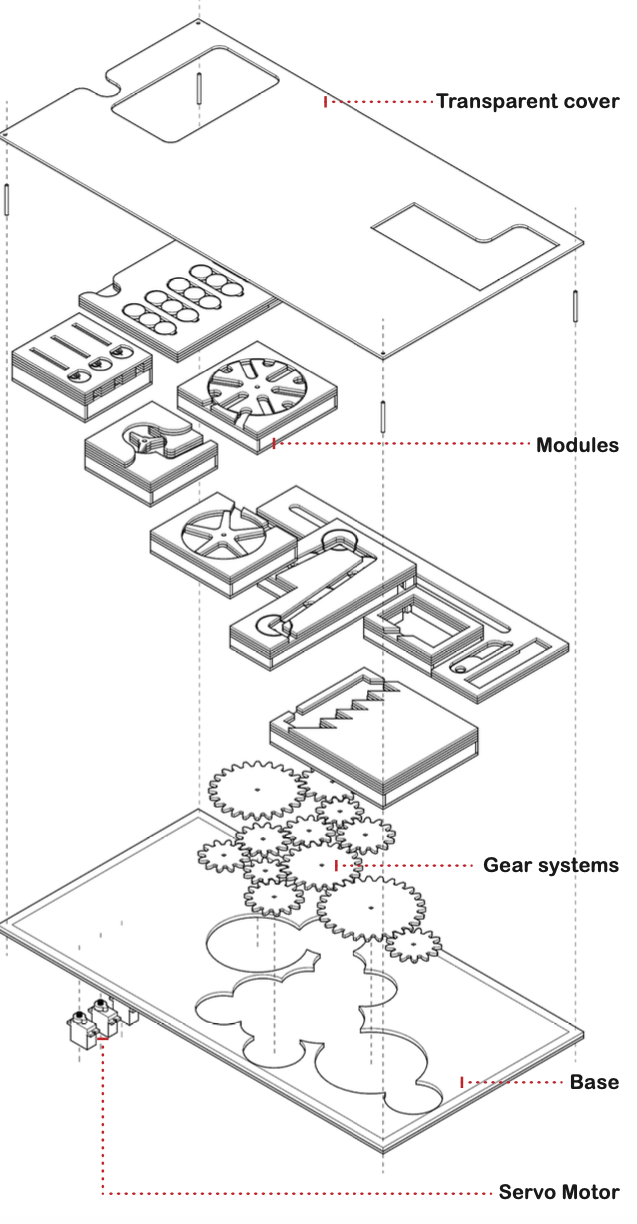
Digestive Tumble
Playful digestion Health Literacy Human-Food InteractionDigestive Tumble is a 3D interactive system that represents the functioning of the human digestive system. The system aims to create awareness of the complex activities of the human digestive system and to foster self-reflection on one’s eating practices. Digestive Tumble consists of eight 3D modules with each module representing a different stage of the digestion process, namely feeding, chewing, swallowing, chemical breakdown, mechanical breakdown, nutrient absorption, fermentation and excretion. The system represents the digestion of five major food groups: grains, meat, vegetables, fruits, and dairy. Users interact with the system by inserting tokens representing different food groups (e.g., protein, meat and dairy). The system then translates these food groups into corresponding numbers of micronutrients that are represented through colorful beads. These beads then traverse through different blocks of the system to show the digestion of the given food item. These beads travel through the system at different rates depending upon the meal consumed by the user. For instance, since vegetables and fruits are quick to digest, the corresponding beads would traverse fast through the system whereas the beads that correspond to grains, meat and dairy will follow slow digestion rates.
Made with by Rohit Ashok Khot, Jason Ng, & Deepti Aggarwal
Rohit Ashok Khot, Jason Ng, and Deepti Aggarwal. 2022.
Crafting Tangible Interfaces for Human Digestion :
Unpacking the Research through Design Prototyping
Journey.
In Proceedings of the Sixteenth International
Conference on Tangible, Embedded, and Embodied
Interaction (TEI'22), ACM, 1-15.
Digestive Tumble in action.
Digestive Tumble Research Presentation at ACM TEI 2022.
Simple.
Digestive Tumble had multiple aims: Our first aim was to develop a simplified representation of the complex processes of the human digestive system. Instead of representing the anatomical structure of organs, we focused on visualising the differences in the processes to support deeper reflection on dietary choices. Secondly, we focused on creating a system that has personal relevance, where users can see how their different meals get digested in the body. Next, we aimed at facilitating shared understanding on one’s digestive processes, where family members can reflect on the ‘how’ and ‘why’ of each other’s dietary choices. Our final aim was to create a glanceable reflection tool that does not require continuous attention of users, instead can work silently in the vicinity like a clock. The design mimics the slowness of our digestive system, where the digestion rate varies from a couple of hours to days for different food groups.
Grounded.
Digestive Tumble demonstrates how the food goes through different processes by using physical metaphors like tokens and beads. Following the Australian Dietary Guideline, we categorized different food items into five main groups: grains, meat, fruits, vegetables and dairy. These food groups are represented through colorful tokens. The system takes a couple of hours to show the digestion of a meal, where the time varies depending upon the food composition of the meal. For instance, fruits and vegetables are high in fibre, hence get easily digested; whereas grains, meat and dairy follow slow digestion. The system also utilises audio and visual representations to show the internal transformations of food. Finally, taking inspiration from the ‘body as a factory’ analogy, we used familiar metaphors of machines and industrial processes to visualise the digestive processes. For instance, while mechanisms like conveyor belt, and hold and release claws are used to represent the processes; geometrical figures like square, rectangle and L-shapes are used to design the modules. Digestive Tumble includes a certain level of abstraction to simplify the complex digestive processes so that users can easily understand the processes and can use the system safely at home. For instance, the excretion process does not contain the stigmatic details like colour, shape or odour of the stool, hence providing opportunities to discuss the processes both in general and in relation to one’s body. By externalizing the internal processes and putting them out on display, we aim to remove the stigma on discussing one’s digestive health.
Contextual.
Digestive Tumble is designed in white colour with no flashy components so that it can easily blend in the home setting. While the modules of the system are white in colour, the beads are colourful to support glanceable feedback. The size of the system is also carefully designed so that users can glance at the modules from a distance to check the digestion status of their meal. Digestive Tumble works as a standalone unit at home and needs input only in the form of tokens. The system needs direct power supply to run, but does not require any data communication through Bluetooth or Wi-Fi. The system follows a minimalistic use of electronics and runs mostly with mechanical gears. The system consists of 12 various sized gears controlled by a stepper motor that runs via Arduino. There are no exposed electronic components nor the system makes use of any chemicals, hence the system is safe for everyday use at home. Moreover, while the digestive process utilises different acids and enzymes to physically transform the food into absorbable nutrients, we took a simplified approach to represent the transformation of food through tokens and beads so that the system can be safely used by users of all ages. Digestive Tumble mimics the slowness involved in the digestion processes and presents the digestion of a meal over a long period. By doing so, the system aims to support slow reflection on our digestion processes. The tokens and beads support multimodal interactions (i.e., visual, tangible and audio) with the system. The multimodality, slowness and playfulness in interactions will allow deeper reflections on one’s dietary choices, encouraging users to adopt a diverse and balanced diet.





